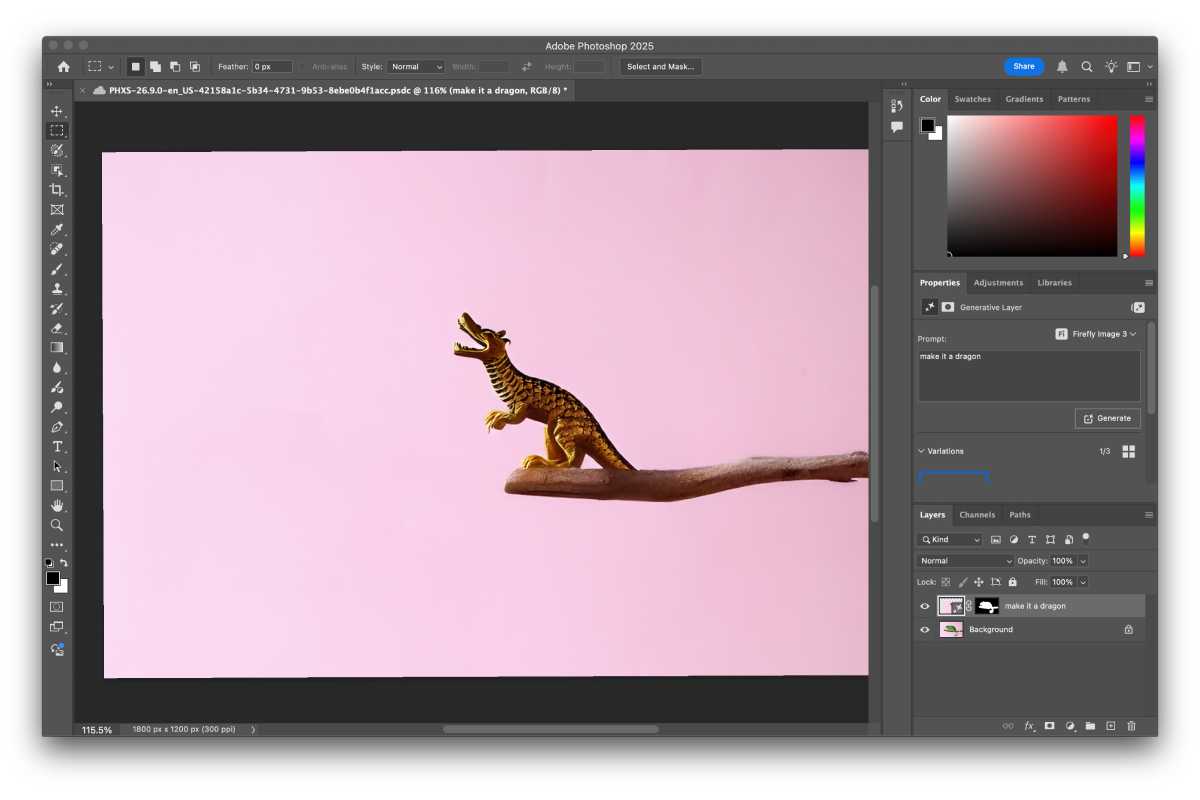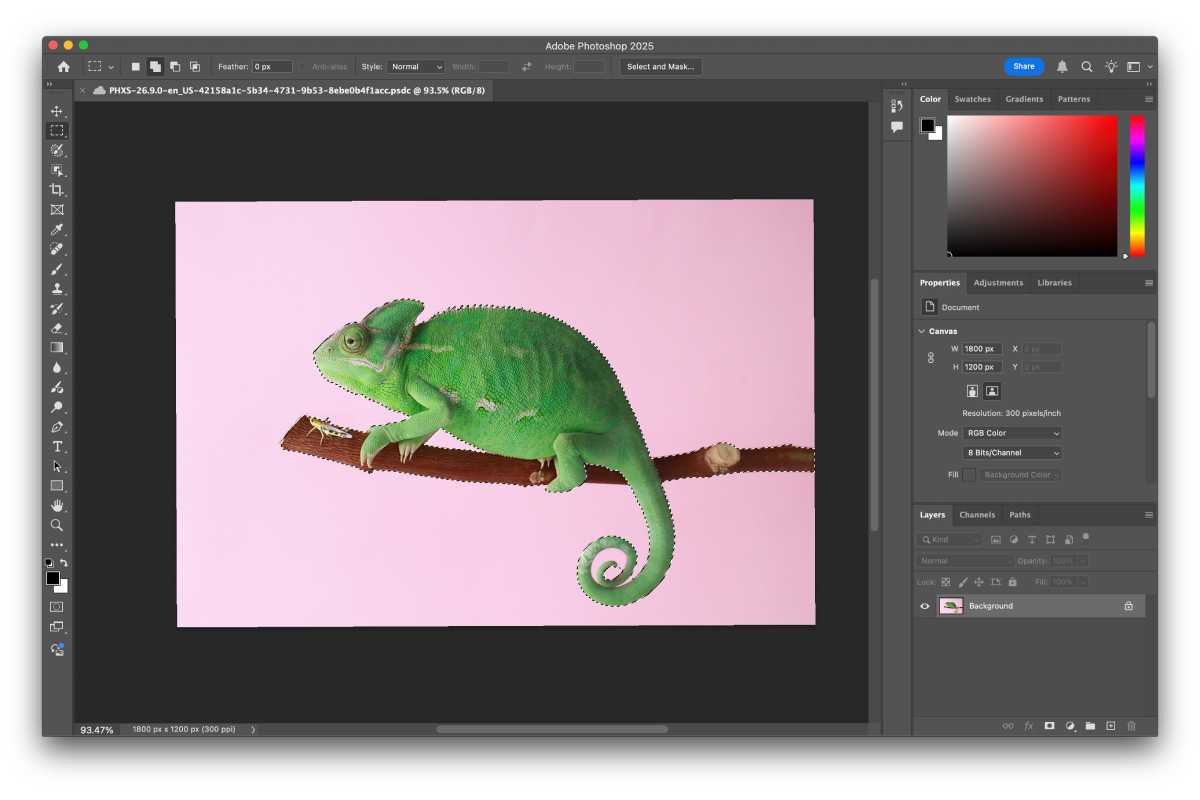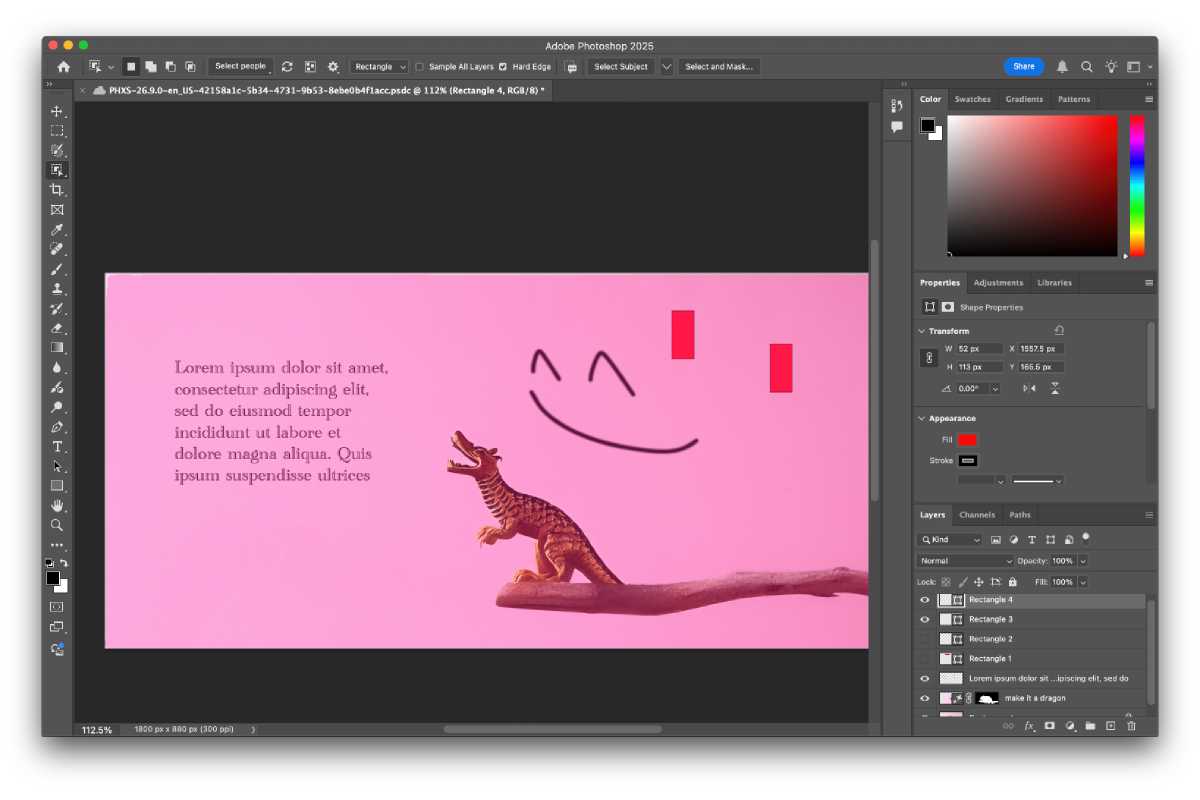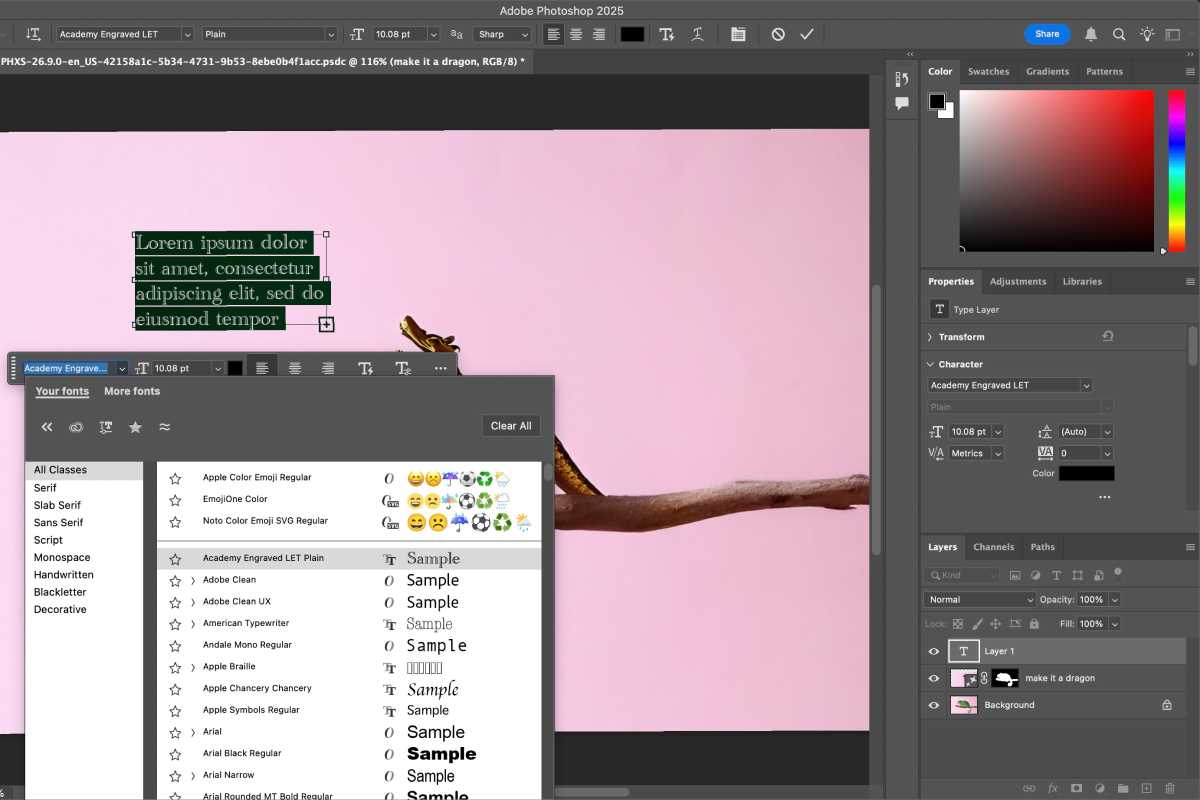 At a glance
At a glanceExpert's Rating
Pros
- Wide range of photo editing tools, including AI-powered ones
- Cross-platform editor offering desktop, web, and mobile apps
- Regularly updated
- Compatible with dozens of plugins
- Handy guides and tips for beginners
- Supports online collaboration
Cons
- Bloated desktop app(s)
- Relatively expensive
- No lifetime license
Our Verdict
Adobe Photoshop remains the best photo editor for professionals out there. It’s stable, reliable, feature-rich, and actively developed; it won’t disappoint.
Price When Reviewed
This value will show the geolocated pricing text for product undefined
Best Pricing Today
Best Prices Today: Adobe Photoshop
Adobe first launched Photoshop exclusively for the Macintosh in 1990. Since then, the software has grown to become the default photo editor for creative professionals on all platforms. Today, the app is available on all major operating systems and continues to keep up with the latest industry trends—including the current AI boom.
While many rivals have put out alternative photo editing apps, very few brands have managed to gain a fraction of AdobePhotoshop Pricing and availability
Adobe Photoshop is available on macOS, iOS, iPadOS, Windows, Android, and the web. While all clients serve the same main purpose, the actual feature set differs based on the platform you’re using. For example, some of the desktop tools are currently unavailable on mobile and on the web. As such, this review focuses on the Mac version of Photoshop.
Getting started with Photoshop
Unlike Adobe Lightroom, Photoshop is not available on the Mac App Store. To install the macOS client, you’ll first need to download the Creative Cloud app launcher from the web, which then automatically installs over half a dozen other Adobe apps for maintenance and such. It’ll flood your Launcher (or App Library on macOS Tahoe) with unnecessary icons and overload your Mac with background processes that could drain the battery and impact its performance. It’s a nightmare. The alternative is using the web version of Photoshop, but it’s missing some features.
Despite the bloatware, Photoshop performed fluidly on my M2 MacBook Air running the macOS Tahoe developer beta. Compared to the web app, the native Mac client’s UI looks a bit outdated, but it works. You get to tweak the theme and other preferences, but a modern redesign is objectively overdue.
If you’re new to Photoshop, you’ll likely appreciate the tips and video guides bundled with the app. Thanks to these explainers, you can find out exactly what each primary tool does and quickly get to know how the complex software operates.
Photoshop AI-powered tools

Foundry
Before looking into the traditional Photoshop features, let’s explore the newest features that are powered by artificial intelligence. Adobe Firefly is the company’s AI engine, and it’s baked natively into Photoshop. While using AI in photo editing can be a controversial topic, certain smart tools help creatives achieve more in less time—without necessarily stripping the original photo of its artistic essence.
For example, noise reduction tools and blemish erasers have been around for eons. The AI-powered Photoshop app merely upgrades these existing features to enhance the output. So, you get to circle intrusive objects and have AI generate a suitable background that blends with the rest of the image. You similarly get to upscale or expand photos while minimizing pixelation. It’s the subtle kind of AI that maintains the input’s realism.
Otherwise, you get some wilder AI features in Photoshop for those who want to completely transform their content. For example, you can generate images from scratch using text prompts and insert them realistically (shadows and all) into your project. You also get to try different variants of the same object to see what visually works best in a particular context.
Likewise, you can isolate the subject in your shot and have AI generate new backgrounds or sky styles, making it easier for marketers to take product shots. Similar to Lightroom, you can also apply AI-made filters that uniquely adapt to your individual photos.

Foundry
Like most AI features, the output can sometimes be unpredictable. However, the features have generally worked reliably for me, and they are undoubtedly more accurate than asking ChatGPT to edit a photo in a specific way. It’s worth noting, though, that certain generative features consume Adobe Firefly credits. If you run out of AI tokens, you can buy additional ones via a separate Firefly subscription, which starts at $9.99/£9.98 a month.
Photoshop classic features

Foundry
Even before the AI boom, Adobe Photoshop topped the photo editing charts due to its advanced capabilities. For starters, the software utilizes a longstanding layering system, making it easy to isolate edits and apply changes without affecting the original image. If you’re unsure about a certain change or effect, you can easily deactivate, reorder, or delete the respective layer without impacting the rest of your project.
Other non-AI features include different brush styles for doodling, cloning tool, a ton of fonts for inserted text, cropping, blending, color balance adjustments, smudging, masking, healing, distorting, warping, edit changelog, numerous export options, etc. And with support for third-party plugins, you can supercharge the software further with more specific tools that Adobe doesn’t natively offer. There’s a reason why the word Photoshop has become the go-to verb for any altered image—it’s incredibly powerful and basically limitless in its abilities.

Foundry
In terms of performance, I didn’t encounter any major bugs or lags while using Photoshop on my MacBook. If it feels sluggish, you can head to the app’s settings and tweak some relevant options to make the experience smoother. For example, you can pick between on-device and cloud processing for certain AI features. Similarly, you can accelerate some tools by prioritizing speed over accurate results and dictate how much RAM the software can put to use.
Photoshop Pricing
To access Photoshop on macOS (or any other platform), you’ll need to pay for a subscription after your 7-day free trial expires. Adobe offers three main tiers:
Photoshop: The vanilla tier offers Photoshop access on all platforms, in addition to 100GB of cloud storage, for $34.49/£32.98 a month and cancel at any time. If you have long-term photo editing needs, you can opt for the $275.88 annual plan with monthly $22.99/£21.98 billing. Canceling the latter plan early will incur additional fees, however. To maximize your savings, you can pay $263.88/£262.51 upfront for one year of access.
At the time of writing Adobe has 50% off for the first three months in the UK, meaning you can get it for £9.98 a month for three months, before paying the full price for the rest of the term.
Photography bundle: This discounted tier unlocks Photoshop, Lightroom, and 1TB of cloud storage for $29.99/£28.99 a month (cancel at any time). Similar to the vanilla tier, you can choose an annual plan to save some bucks and get it for $19.99/£19.97 a month. Whether you’re opting for monthly billing or paying it all in one go, this bundle will cost you $239.88/£238.42 a year.
Creative Cloud Pro bundle: If you rely on other Adobe software, you can pay $104.99/£99.89 a month for the all-encompassing Creative Cloud Pro bundle (cancel at any time). This unlocks Photoshop, Lightroom, Acrobat, Illustrator, and over a dozen other apps. The annual plan is a monthly $69.99/£66.49 payment, while an upfront payment would discount it to $779.88/£773.86 for the year.
Adobe U.S. has 40% off for the first year bringing the price down to $41.99 a month paid monthly on the annual plan.
Adobe U.K. has 50% off for three months bringing the price down to £32.66 a month for three months.
Eligible students can apply additional discounts when subscribing to the Creative Cloud Pro bundle.
The price structure doesn’t make a lot of sense, and the Photography bundle is the best value even if you just want Photoshop. You’re still be getting around 10x more cloud storage for a significantly lower fee compared to the vanilla Photoshop tier.
For more information on Adobe pricing and the latest deals read Adobe Creative Cloud pricing: How to get the best deal.
Should you subscribe to Adobe Photoshop?
Whether you’re polishing a portrait, designing a poster, preparing marketing materials, or creating a digital banner, Photoshop will be able to handle your needs. And due to its popularity, you can find hundreds of solid tutorials on YouTube and other sites if you’re new to the platform. The app caters to both basic edits and advanced workflows, so no matter what your experience level is, you can find ways to utilize Photoshop effectively.
The only reason you may want to avoid using Photoshop is its revenue model. It’s not cheap, and for many reasons, some users avoid services with recurring subscription fees. Fortunately, there are plenty of Photoshop alternatives that are completely free, such as Photopea, or charge a one-time fee, including Apple-owned Pixelmator. While their feature sets—especially the AI-centric ones—aren’t identical to that of Photoshop, they can still produce similar results.
However, if your job revolves around manipulating images or you’re a prospective artist, then Adobe Photoshop is absolutely worth the price tag. Ultimately, Adobe Photoshop remains the best photo editor for professionals out there. It’s stable, reliable, feature-rich, and actively developed; it won’t disappoint.



